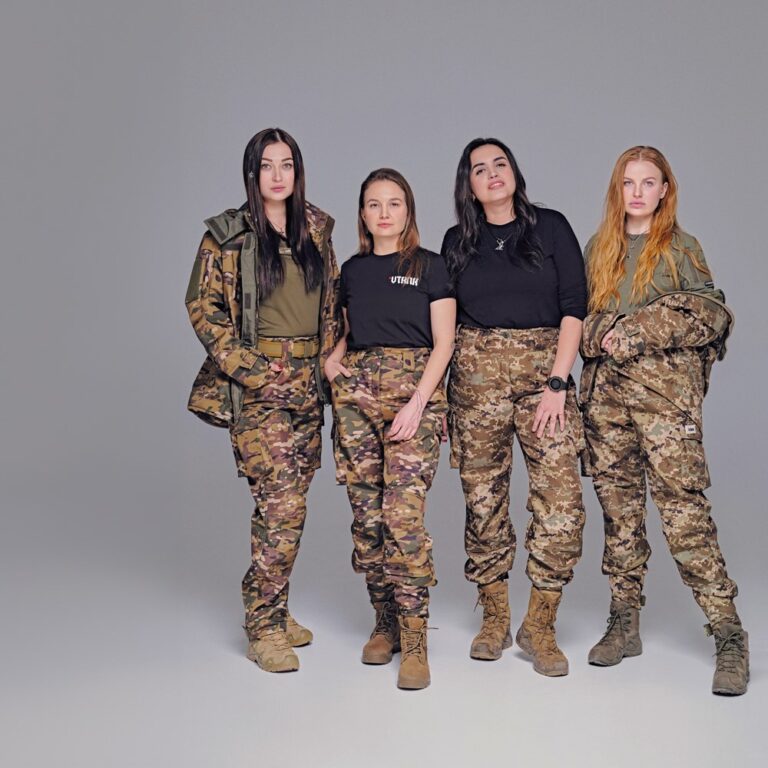
For many centuries, women were often restricted to a few roles in the military or completely barred from joining the armed forces, as it was deemed “a man’s duty”. However, modern societies are increasingly rejecting these beliefs. In Ukraine, the decade-long war against Russia has demonstrated how crucial women’s contribution can be. It has shown that gender stereotypes need to be discarded, and at times of war, the entire society has to come together for a common goal — to defeat the enemy.
In Ukraine, the idea of gender equality in the military is championed by The Women Veterans Movement (WVM), also known as Veteranka. The movement emerged from the “Invisible Battalion” campaign, initiated in 2015 by veteran Maria Berlinska. Initially, the campaign explored the role of Ukrainian women in the war against Russia. It also aimed to raise awareness about the challenges faced by female service members, as well as to ensure equal conditions for women in the Armed Forces of Ukraine at the legislative level. Due to the “Invisible Battalion” efforts, the list of combat positions available to women in Ukraine has been significantly expanded.
In 2018, the “Invisible Battalion” led to the establishment of the public organisation Women Veterans Movement. This entity was the first in Ukraine to raise the issue of providing adequate material and technical support for female defenders at the state level. As of today, it has grown into a strong community of female veterans and service members who not only support each other but also drive change within the country.
The work of the Women Veterans Movement during the full-scale Russian invasion
Since 24 February 2022, most female veterans have returned to the front lines, while others, along with many other Ukrainian women, have joined the Women Veterans Movement as volunteers. They provide support through a rapid response headquarters, which was set up the day after the Russian full-scale invasion broke out.
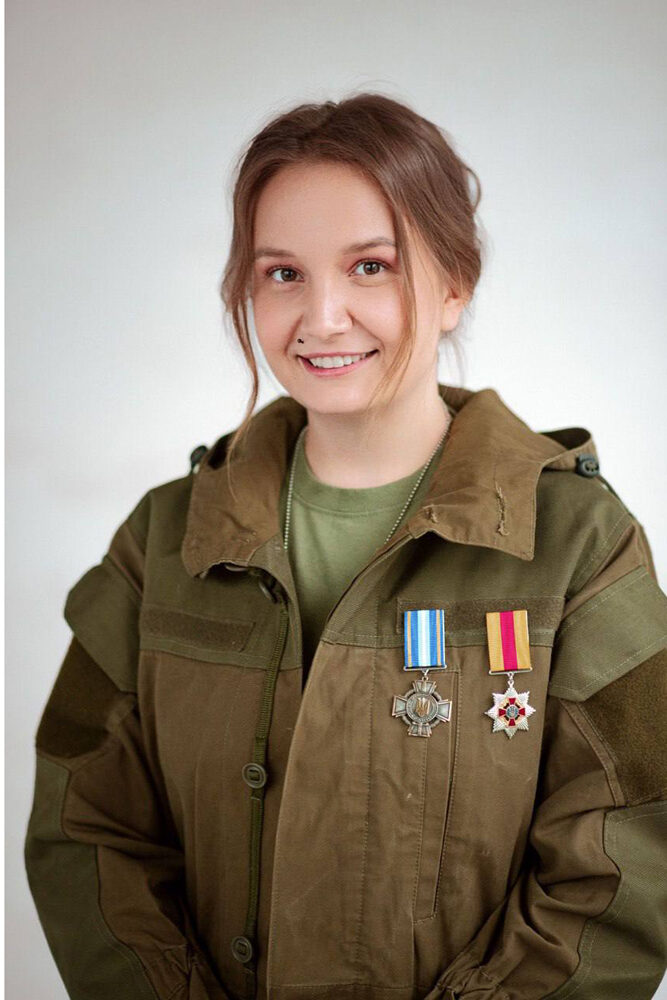
Kateryna Pryimak. Photo source: The Women Veterans Movement.
Kateryna Pryimak, the organisation’s head, says the Women Veterans Movement is working hard to effectively meet the needs of female defenders on the front lines.
“In the two years since the full-scale invasion started, we have raised over 90 million hryvnias (roughly $2,135,000) for the front lines, not counting the support from our partners. The movement has delivered 98 vehicles, 1,961 drones, 34,000 pieces of ammunition and gear, and more.”
Kateryna shares that the movement has become a strong community for her, one that empowers her to drive change in the country.
“I am very proud of the organisation and the team. I can see how much we have grown. I remember how we started, and the difference in our development is huge. What I’m most proud of is that we don’t stop and have many more achievements to come. I’m proud of all the advocacy work we have done and our community, which now has over a thousand female veterans.”
The full-scale war has introduced new challenges, particularly regarding the proper state provision for female service members. The female defenders needed help not just with purchasing drones, vehicles, or night vision equipment but also with basic gear such as military uniforms, body armour, and helmets. At the beginning of the full-scale invasion, finding suitable clothing became one of the most common issues. At that time, Ukraine had only approved ceremonial military uniforms for women. As a result, Ukrainian women joining the Armed Forces received standard men’s uniforms they had to wear during service. Women often had to alter their uniforms or come up with creative ways to make them more comfortable — like using safety pins or belts. The Armed Forces also didn’t provide helmets, body armour, footwear, or even underwear specifically designed for women.
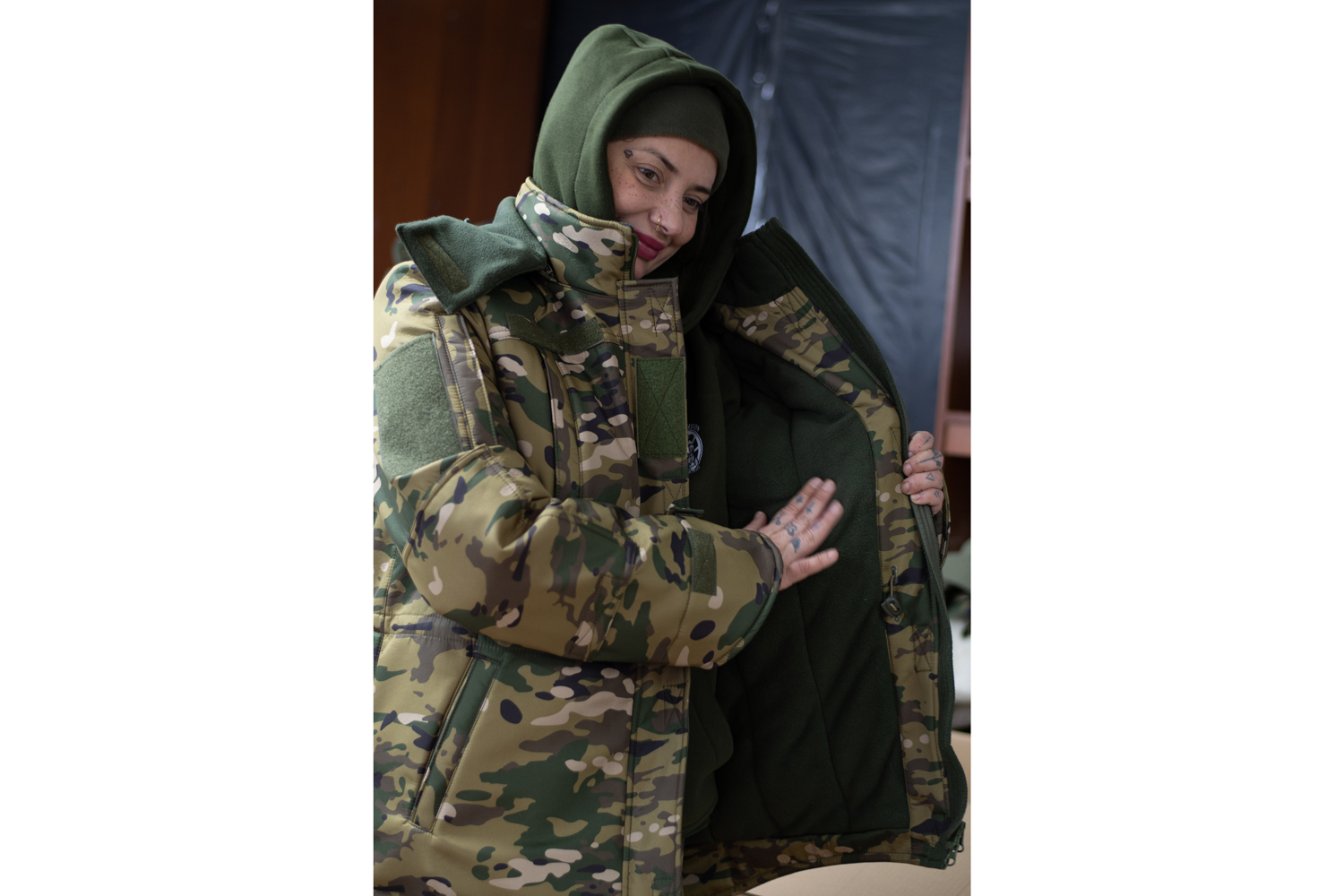
Photo source: The Women Veterans Movement.
The first female military uniforms were issued only in February 2024 and were summer field outfits. Before that, women had to either sew or alter their uniforms themselves or get them from volunteers and Ukrainian organisations. The Women Veterans Movement established its workshop to produce both winter and summer uniforms for female defenders. The organisation was one of the first in Ukraine to introduce field uniforms tailored to fit the anatomical features of women’s bodies. Over the past two years, Veteranka has produced and distributed around 700 sets of such uniforms for free to female defenders. In addition, the movement also manufactures camouflage coats for scouts, gaiters for artillery crews, and covers for drones, Stingers (an American portable surface-to-air missile system – ed.), and small infantry shovels.
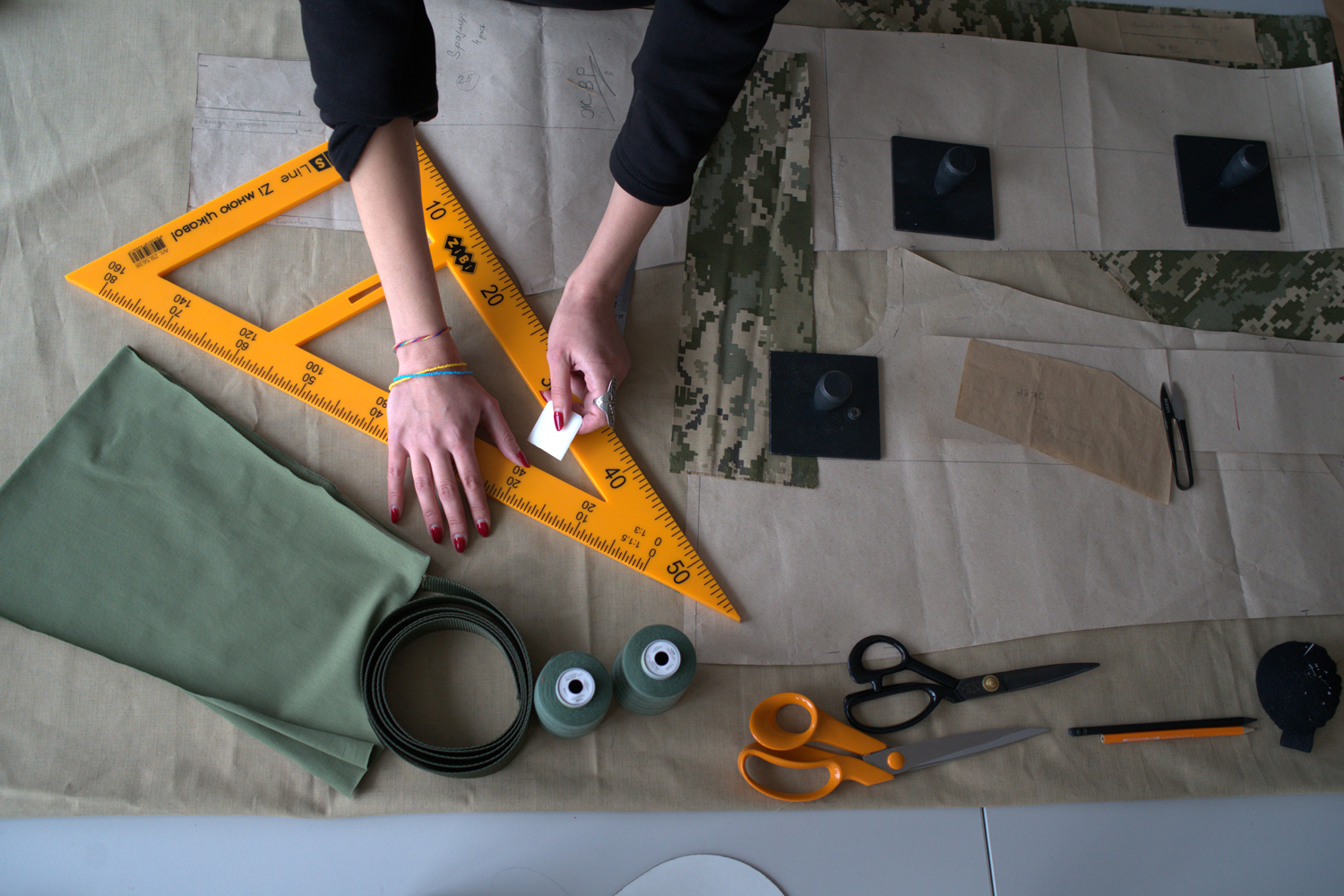
Photo source: The Women Veterans Movement.
Veteranka also organises charity events, having successfully hosted over 50 of them that featured celebrities. They also held two charity photo exhibitions showcasing works created by female defenders and movement members. The Women Veteran Movement has collaborated with over 100 organisations and influencers and launched numerous awareness campaigns to raise funds for female defenders and their units. One notable campaign was the fundraiser game “Legend of Sister’s Power”, which raised nearly $150,000. This money was used to purchase 1,200 pairs of boots, seven drones, three vehicles, and five night vision devices. Another initiative, the “Ukraine on the Line” flash mob fundraiser, raised about $75,000 to buy communication equipment for the 35th Separate Marine Brigade named after Rear Admiral Mykhailo Ostrohradskyi.
Veteranka is also working on establishing a robust mechanism within the Armed Forces of Ukraine (AFU) to combat sexual harassment and gender-based violence. In March, Kateryna Pryimak submitted a petition on the President of Ukraine’s website addressing this issue. The petition notes that dozens of sexual harassment cases have been reported within the AFU, many of which remain unresolved and the perpetrators unpunished. The petition has already gathered more than the required 25,000 signatures and is currently under consideration by the President. Among their new projects, the organisation is preparing a campaign to encourage more women to join the military.
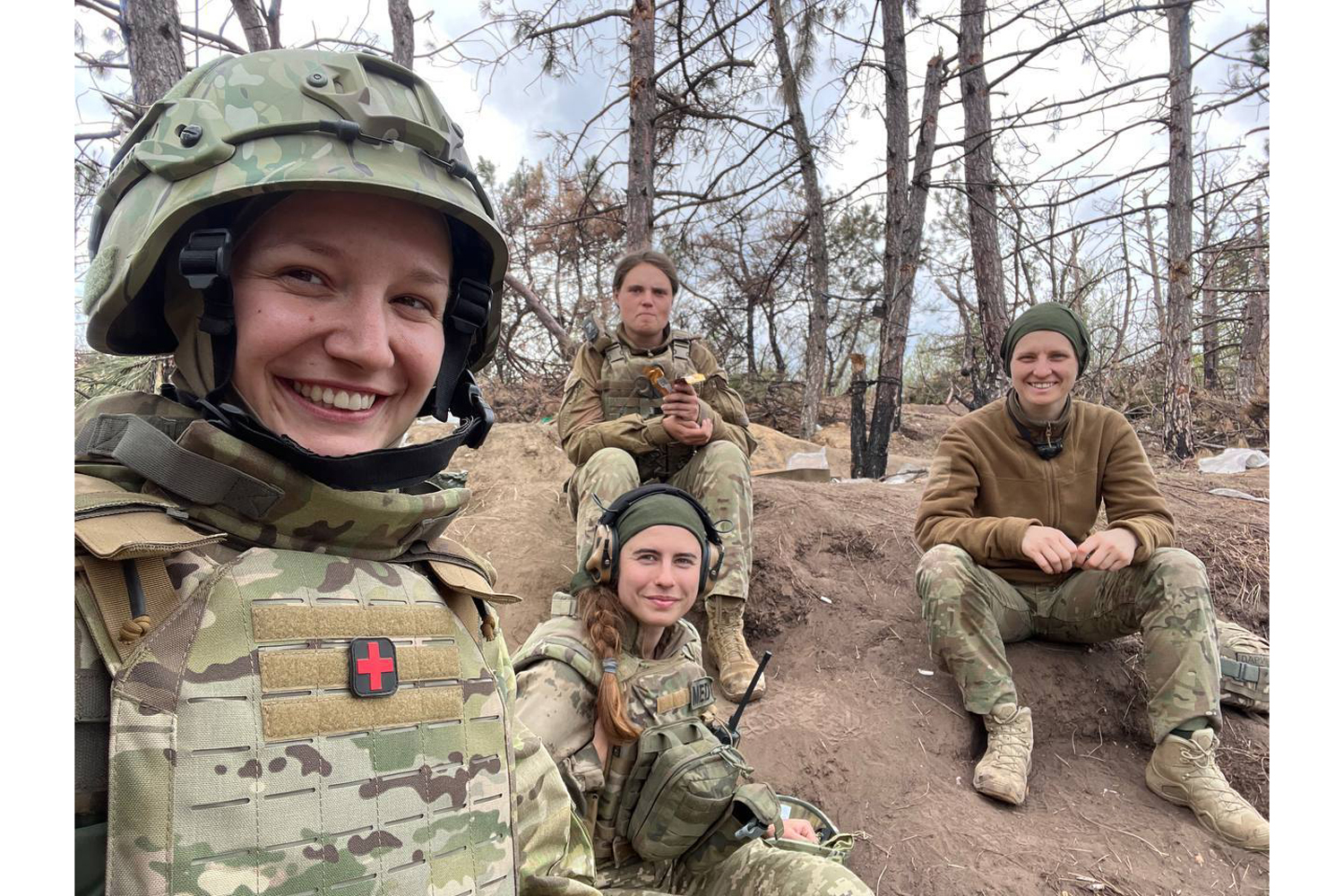
Kateryna Pryimak with fellow sisters from the Veteranka movement. Photo source: Women Veterans Movement.
One of the movement’s key focuses is the rehabilitation of female veterans, which includes educational programs, psychological support, and peer-to-peer assistance. The members promote a proactive approach to reintegrating into Ukrainian civilian society and advocate for changes in the rehabilitation system. The organisation provides support to injured women, offering assistance and guidance during the recovery process for female service members.
They also extend their support for the families of military personnel, female veterans, and internally displaced persons facing difficult circumstances. In this regard, Veteranka offers assistance tailored to individual needs, providing both group and individual sessions with psychologists who focus on improving women’s mental health.
The experiences of Ukrainian female veterans
The organisation not only supports female service members but also showcases their stories on its platforms, including through articles and podcasts. Additionally, it collaborates with various media outlets and has helped produce over 300 pieces of content for both Ukrainian and foreign media, focusing on female defenders and veterans.
The movement brings together female veterans and active service members from across Ukraine. Each story is unique, yet they are all united by a common goal — to defeat the enemy.
Olha Berezhna
Olha Berezhna, known by her call sign “Phoenix”, worked as a cook in a school and kindergarten for 20 years before the full-scale invasion. Now 45 years old, she serves in the Armed Forces of Ukraine.
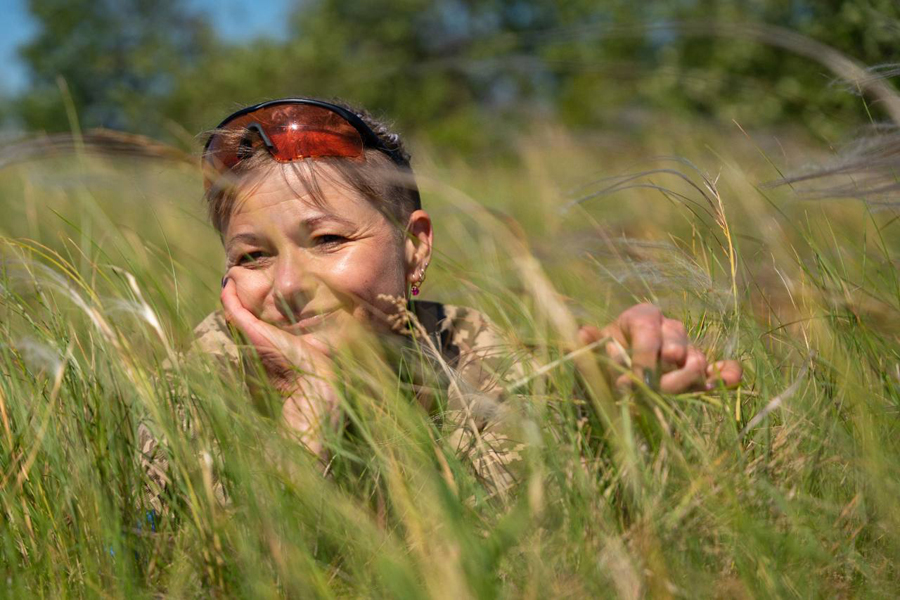
Olha Berezhna. Photo source: The Women Veterans Movement.
Olha joined the military because of her son, who had served on the front lines since the start of the full-scale war. During this time, he sustained four injuries and suffered six concussions, which significantly impacted his health. Despite this, the military medical commission deemed him fit for service. Olha enlisted in the armed forces to effectively replace her son.
“At first, I underwent basic training as a shooter, followed by additional training for a grenade launcher. There was a mountain of paperwork and transfers; everything seemed to be going as planned. The transfer was scheduled for 16 October, but my son was killed on the 14th.”
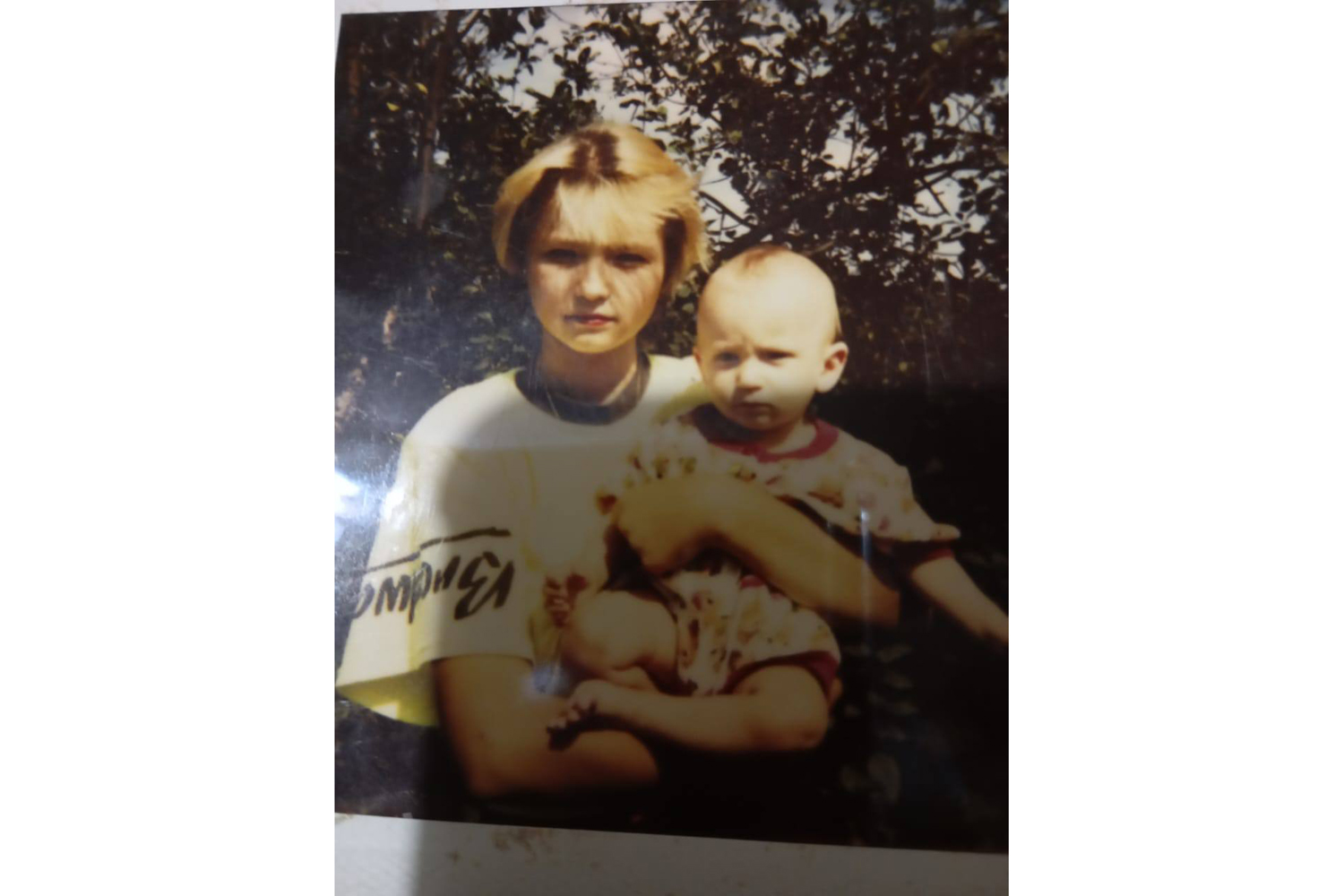
Photo source: The Women Veterans Movement.
Olha recalls that her fellow soldiers helped her cope with the loss of her child. Over time, she discovered a talent for medicine and underwent training again, which led to her being assigned to the combat zone.
“I promised my daughter that I wouldn’t go to the front lines, especially after her father was also killed a year and a half ago while liberating Kherson; he was a scout. But there are others’ sons and daughters here who also need help.”
In the summer of 2023, Olha learned about the Women Veterans Movement from a sister-in-arms. Since then, she has received assistance from them multiple times, including military uniforms and boots, underwear, medical supplies, backpacks, stoves, sleeping bags, and other essential gear. Olha appreciates that the organisation even responds to night calls, emphasising that women in the army can persevere thanks to the caring volunteers.
Yulia Mykytenko
Yulia Mykytenko joined the military twice: first in 2016 and again after the full-scale invasion began. Before that, she was pursuing a bachelor’s degree in Language Studies at the Kyiv-based National University of Kyiv-Mohyla Academy.
“I wanted to enlist back in 2014, but I decided to finish my education first. I met my husband, who had been fighting since 2014, and we joined a volunteer unit together after I graduated.”
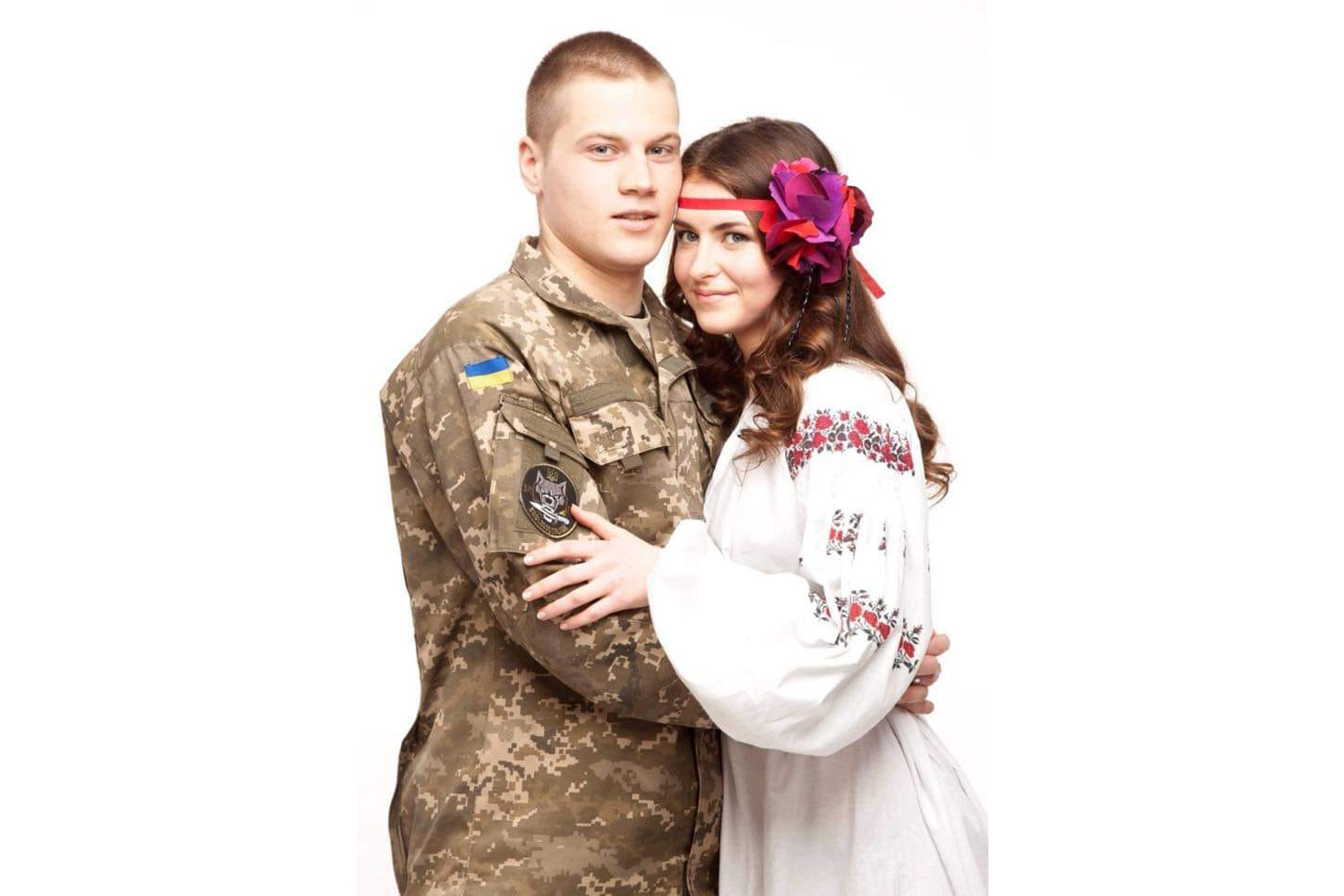
Photo source: The Women Veterans Movement.
Yulia’s journey in the military has been challenging. She was assigned to a combat position when the number of women in the Armed Forces was just around 20,000, with only a few thousand in combat roles. Yulia worked her way up from administrative positions to become the commander of a UAV reconnaissance platoon.
“As a commander, I have one obligation: to preserve the life and health of my team while accomplishing the assigned task. There are many problems and nuances that come with it.”
As a commander, Yulia faced difficulty being accepted by her subordinates in a leadership role. She admits that, at that time, she underestimated the risks the battalion leadership took by appointing a female to a leadership position, but now she understands it and is grateful for their support. Her peers and subordinates were initially surprised and disheartened, and many in the reconnaissance platoon opted to transfer to other units. In the end, she was left with only three team members, including herself, before heading into the combat zone.
“[It was] truly a tough period of service. My husband supported, inspired, and sometimes even protected me. He encouraged me and offered advice, as he had served in the reconnaissance battalion from 2014 to 2016 and was much more familiar with the specifics of reconnaissance work than I was. I studied at the Academy of Land Forces to become a motorised infantry platoon commander. The work of an infantry unit and reconnaissance is somewhat different.”
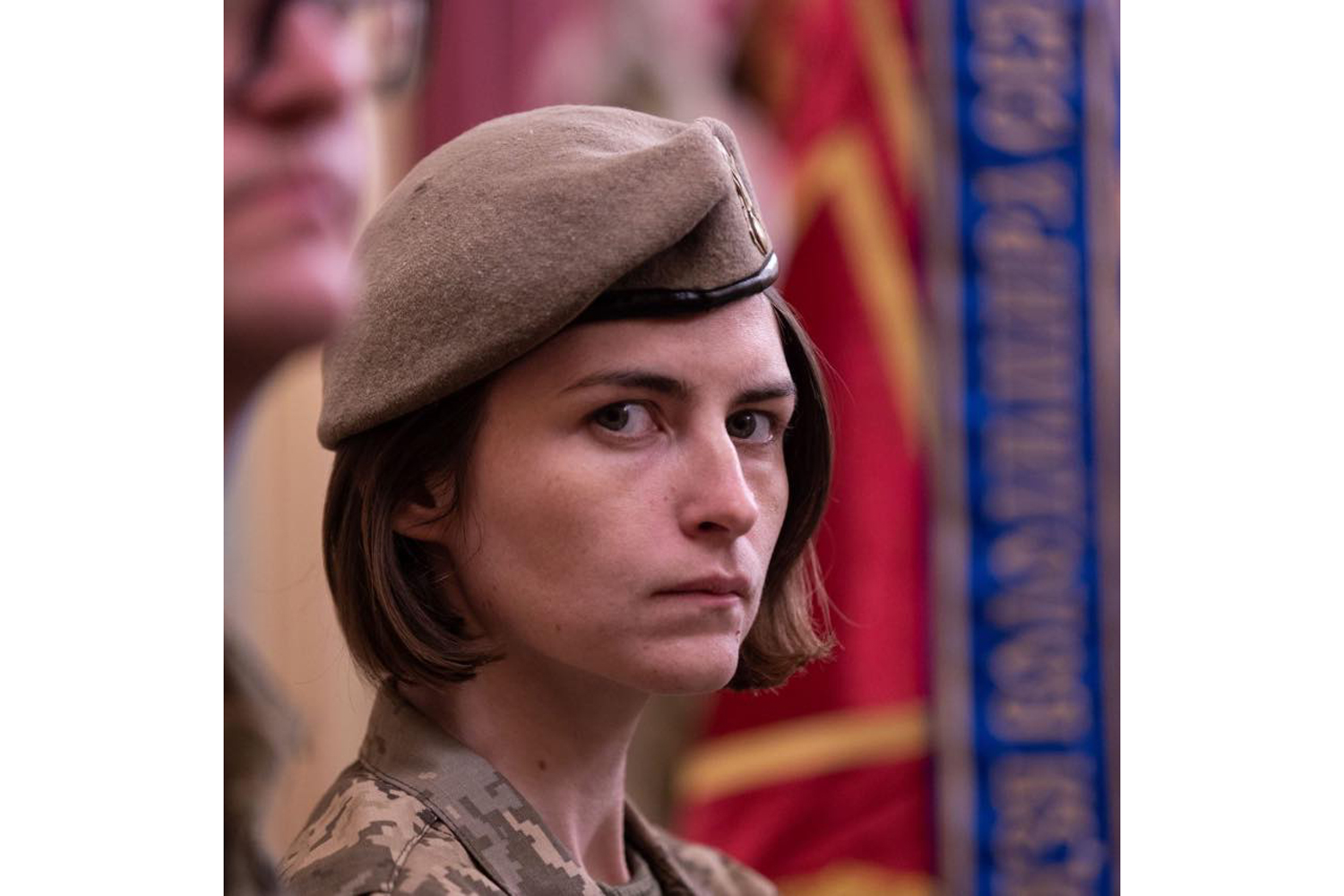
Photo source: The Women Veterans Movement.
From 2018 to 2021, Yulia served as a platoon commander at the Ivan Bohun Military School in Kyiv (one of Ukraine’s most prestigious military education facilities, providing a comprehensive education for future officers – ed.)
“My job was to educate young boys and girls, instilling in them a love for Ukraine and a sense of dignity and self-respect that should be inherent in the Ukrainian military. In 2021, I left the service and worked for six months as a project manager in various veterans’ rehabilitation programs, as I am a veteran myself. It was critically important for me to help my fellow soldiers to find their footing in civilian life after combat.”
Yulia felt compelled to return to the Armed Forces in 2022, driven by the desire to protect her home and to honour the memories of her husband and father, both of whom had made the ultimate sacrifice. She also made a promise to herself she would rejoin the military in case of a full-scale invasion.
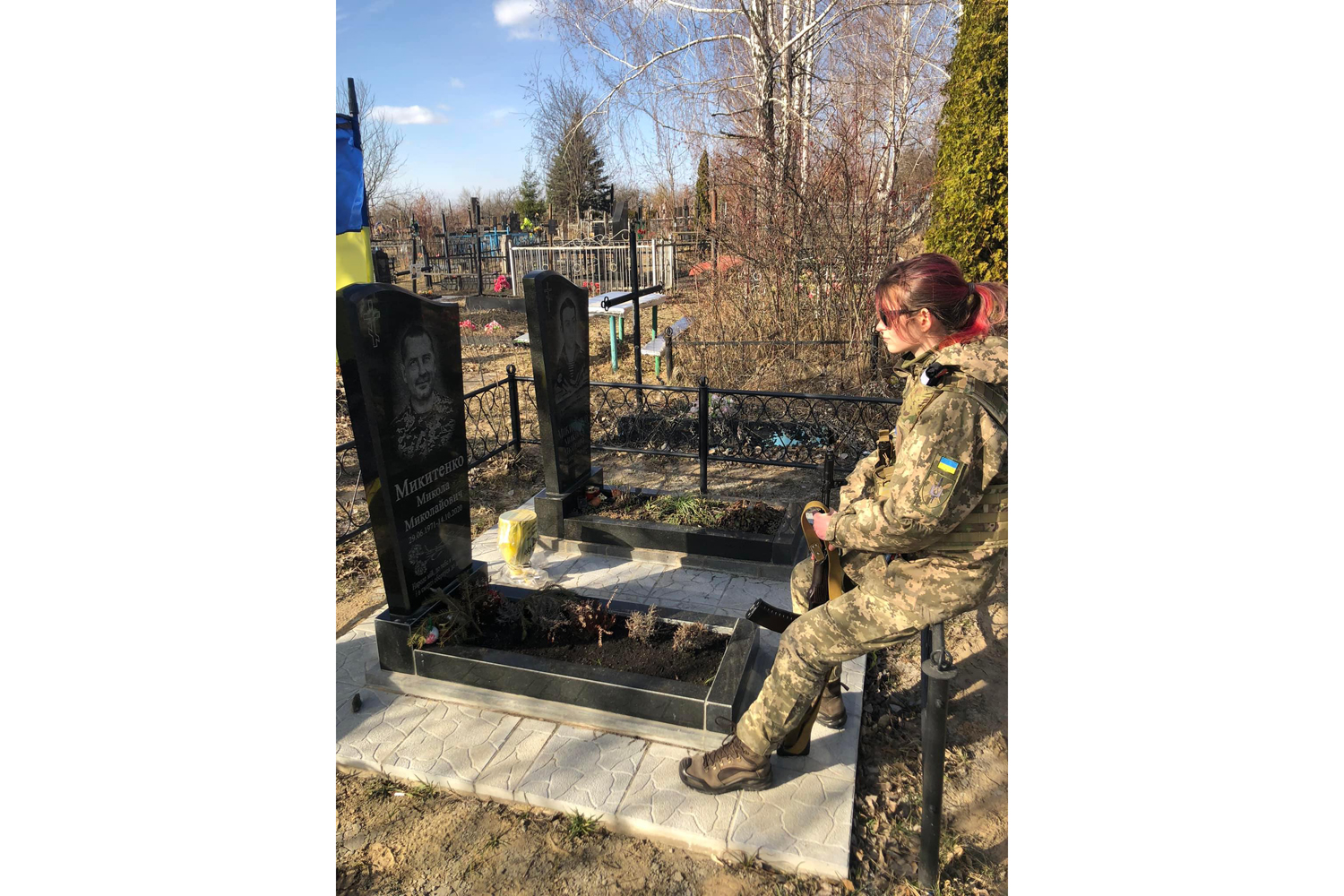
Photo source: The Women Veterans Movement.
Yulia first connected with the Women Veterans Movement in 2019 when Maria Berlinska invited her to participate in veteran diplomacy and travel abroad for an advocacy campaign focused on securing grants for veteran programs.
“There were women from the movement and co-founder Andriana [Susak-Arekhta]. They told me about the movement. I was excited. When I stepped into my role, I really needed mentorship or at least reassurance that there were other women like me fighting for their right to be recognised as full-fledged combat personnel – women I could talk to about my challenges.”
Yulia believes that without the movement, many women in combat roles would have been labelled as cooks or “bathhouse bosses” in their military IDs. This would deprive female service members and their families of the legal protections and benefits that come with being recognised as combat participants.
“The organisation is shifting the military towards a humanitarian approach, towards respect. Paraphrasing a well-known phrase by Mykola Khvyliovyi, I’d say, ‘Away with the Soviet mindset, we need a true Ukrainian army!’ It may sound lofty, but the women of the Women Veterans Movement have put in significant effort to ensure that women receive legal protections, have comfortable uniforms, and that their voices are heard when they report harassment by some Soviet-style colonel. Women should be respected and not seen as mere decorations in their units.”
Mykola Khvyliovyi
a Ukrainian writer and a key figure of the “Executed Renaissance”, the generation of Ukrainian intellectuals persecuted and executed by the Soviet regime in the 1930s. Khvyliovyi is known for his slogan “Away from Moscow!” which called for the independence of Ukrainian culture from the Russian-dominated USSR.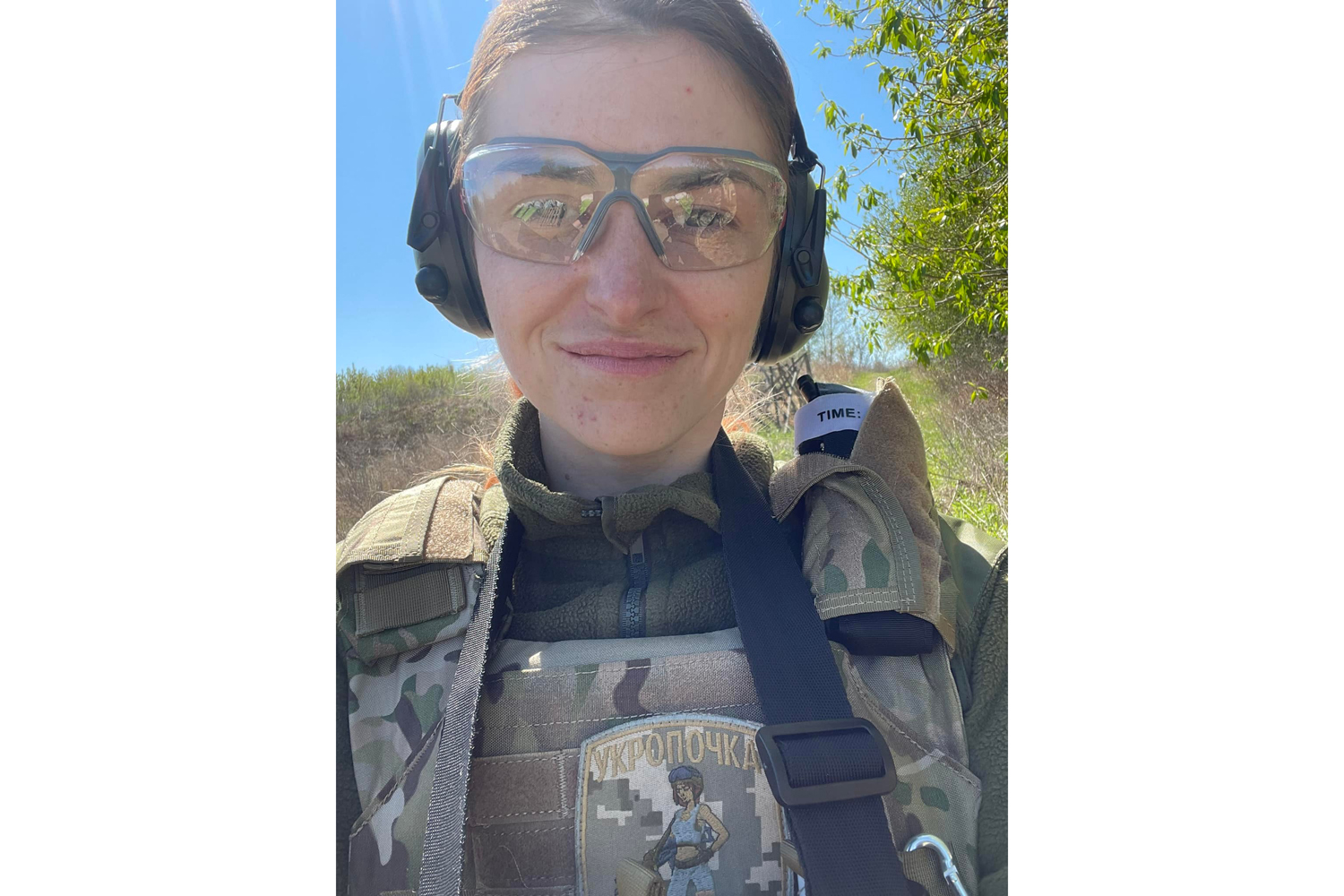
Photo source: The Women Veterans Movement.
Yulia highlights the importance of mentorship for women entering the military.
“I was fortunate to lead the first platoon of girls at the Ivan Bohun Military School. The girls there need support from women who have served. The movement includes women with a wide range of military expertise, so if any of the girls need help, support, or just advice, they always have someone to turn to.”
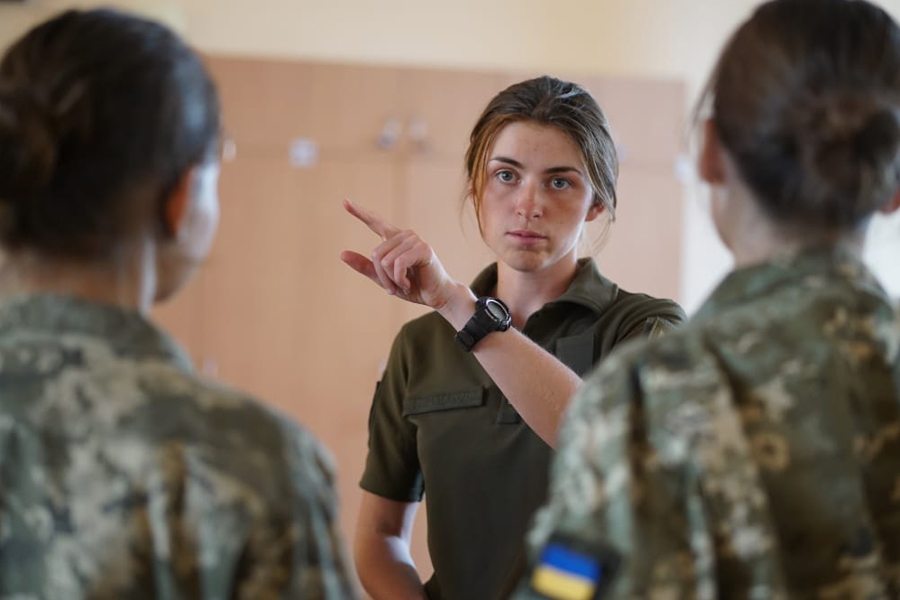
Photo source: The Women Veterans Movement.
Yulia Sidorova
Before joining the military, Yulia Sidorova, known by her call sign “Cuba” was involved in dancing and organising festivals. During the Revolution of Dignity, she worked at a makeshift hospital in the Parliamentary Library, providing aid to the wounded (during the rallies, volunteers self-organised to treat peaceful protesters attacked by pro-government forces – ed). The events of the Revolution of Dignity inspired her to join the Armed Forces of Ukraine to defend the country’s sovereignty. Yulia volunteered in the medical service Hospitallers (a Ukrainian volunteer medical unit founded in 2014 to offer emergency medical assistance and evacuation for military personnel in combat zones – ed.), serving in combat zones and rescuing injured soldiers. Yulia admits that she has always felt drawn to danger zones and is eager to be as helpful as possible.
The Revolution of Dignity (Euromaidan)
was a series of nationwide Ukrainian protests from late 2013 to early 2014, sparked by the suspension of an EU association agreement. The protests resulted in the ousting of Ukraine's pro-Russian President Yanukovych and the subsequent Russian invasion of Ukraine.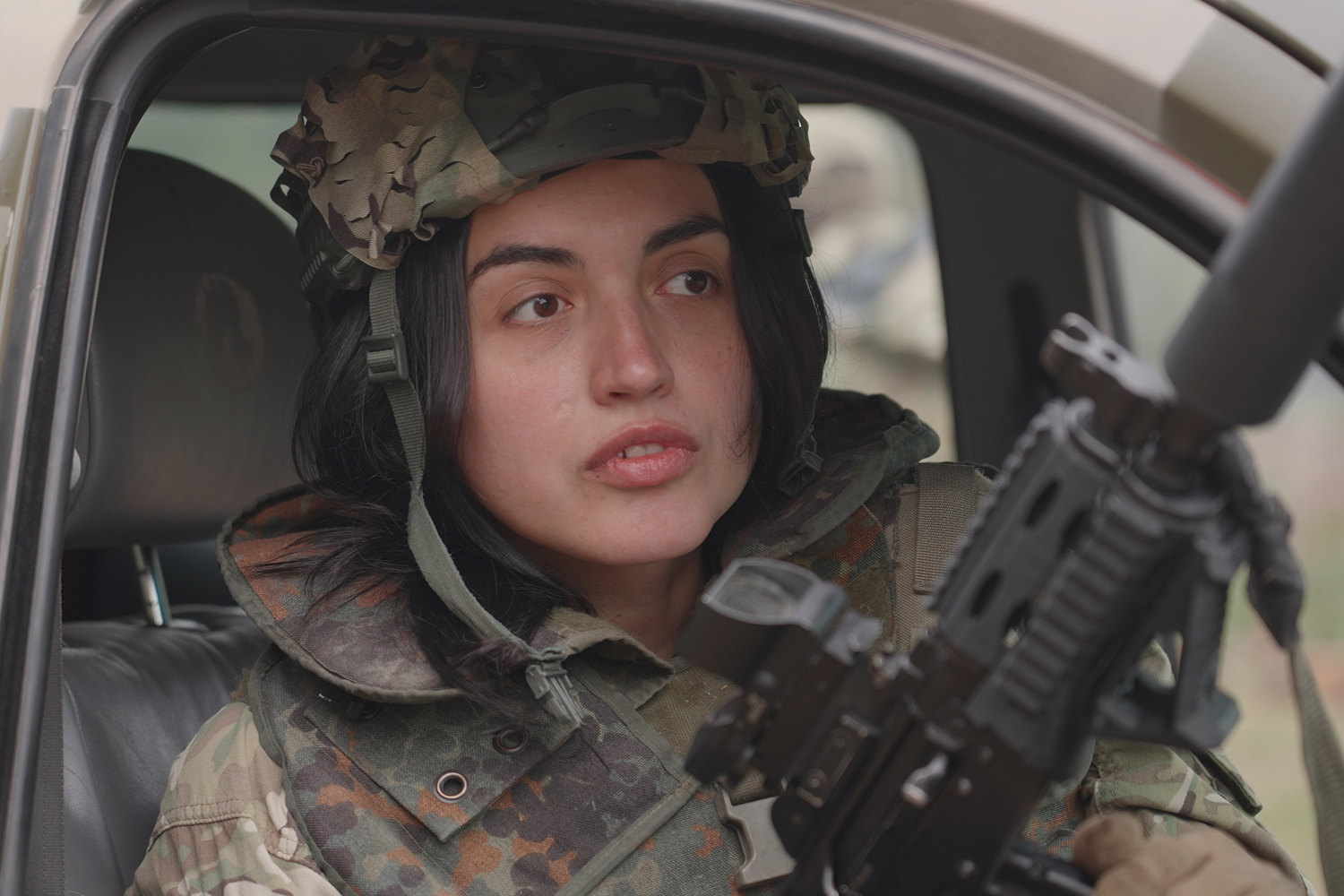
Photo source: The Women Veterans Movement.
In 2017, Yulia founded her own medical service called Ulf, driven by her desire to build something based on her vision.
“Over time, I felt like I had given everything I could there. I wasn’t growing anymore. I don’t like staying in one place. Additionally, emotional burnout and depression also started to take their toll — these factors also led me to leave the front in 2019.”
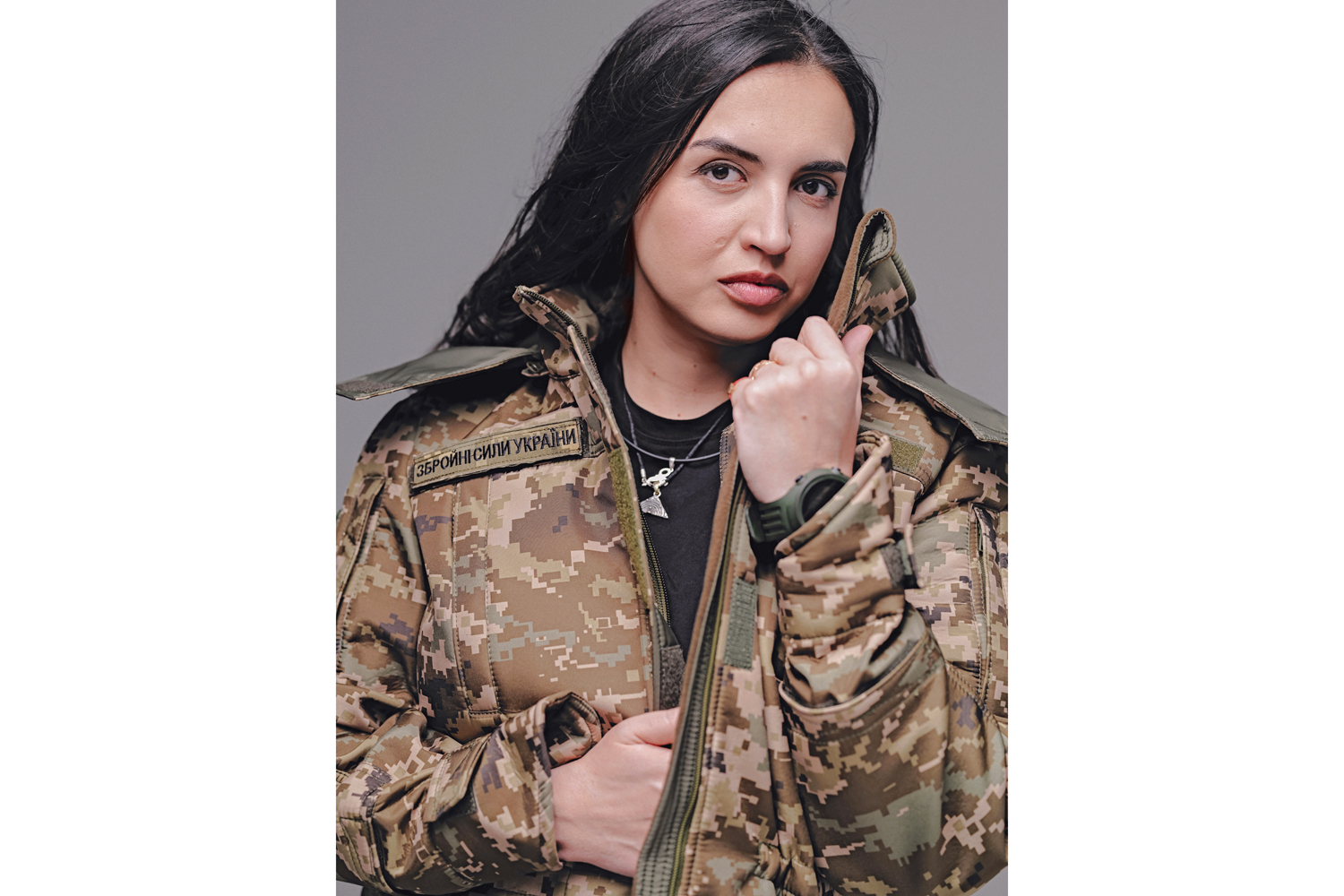
Photo source: The Women Veterans Movement.
After the start of the full-scale invasion, Yulia returned to military service, this time as a paramedic. In 2022, she took charge of the medical service within the Women Veterans Movement.
“We established a Rapid Response Headquarters for the Women’s Veteran Movement, and the medical crew is just one aspect of our work. In terms of medical care, I focus more on quality. I don’t need many vehicles and personnel; what truly matters is that the evacuation transport is equipped with the necessary resuscitation equipment and experienced specialists I trust are close at hand. While we may create new teams in the future, we first need to find individuals willing to train according to TCCC standards. For me, this is a must. Even if someone has a medical background, I wouldn’t bring them on without knowledge of combat protocols.”
Tactical Combat Casualty Care (ТССС)
is a standard for providing medical care in prehospital settings on the battlefield.The impact of Ukraine’s Women Veterans Movement
The number of women in the Ukrainian army is steadily increasing. As of July 2024, over 10,000 female service members are actively engaged in combat missions on the front lines. In total, more than 67,000 women serve in the Armed Forces of Ukraine.
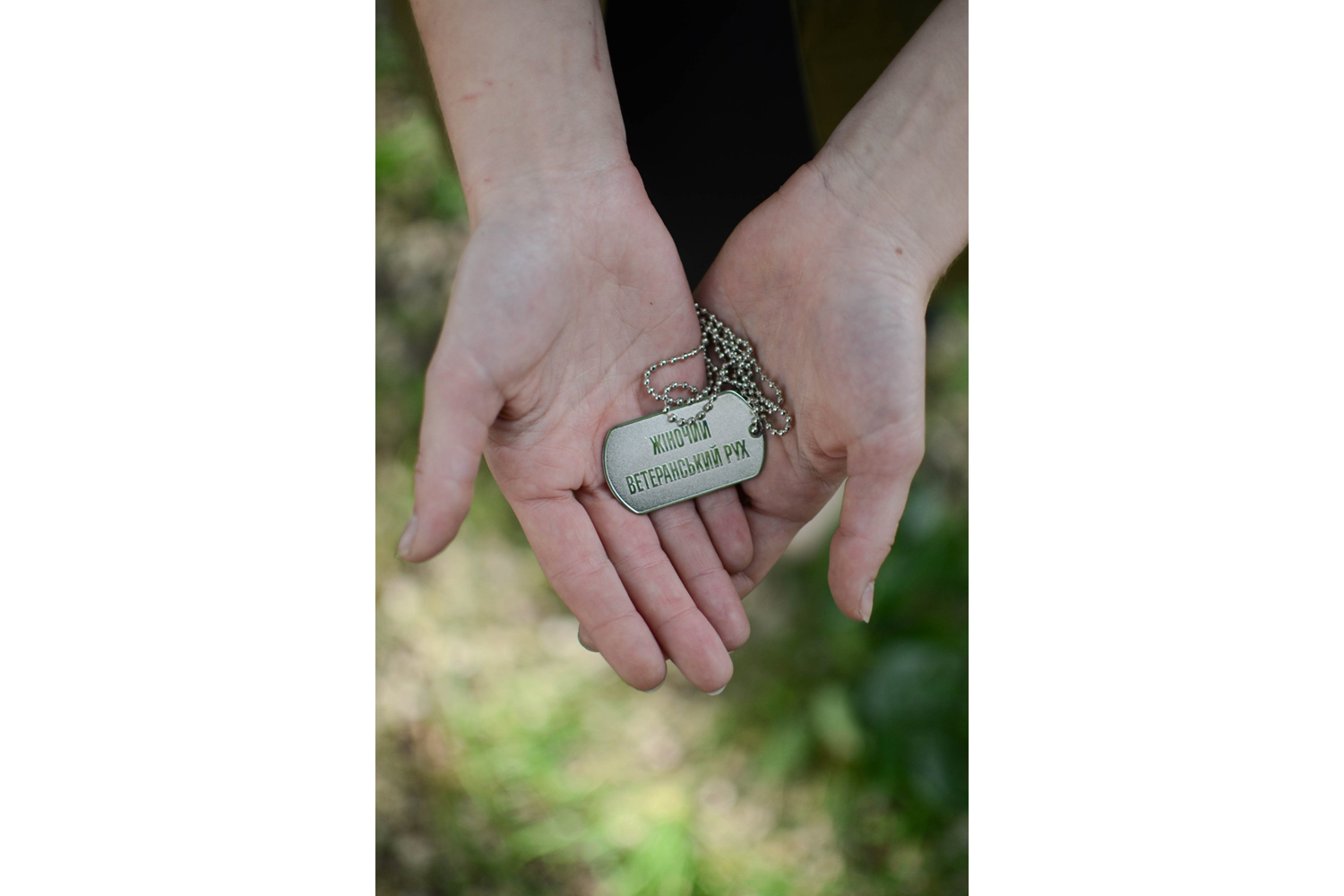
Photo source: The Women Veterans Movement.
The Women Veterans Movement actively promotes important ideas, emphasising the need for the defence sector to pay closer attention to the needs of female soldiers. It advocates for overcoming stereotypical views of women in Ukraine, highlighting their right to participate in various aspects of public life.
You can support the Women Veterans Movement by making a donation or purchasing their merchandise.

